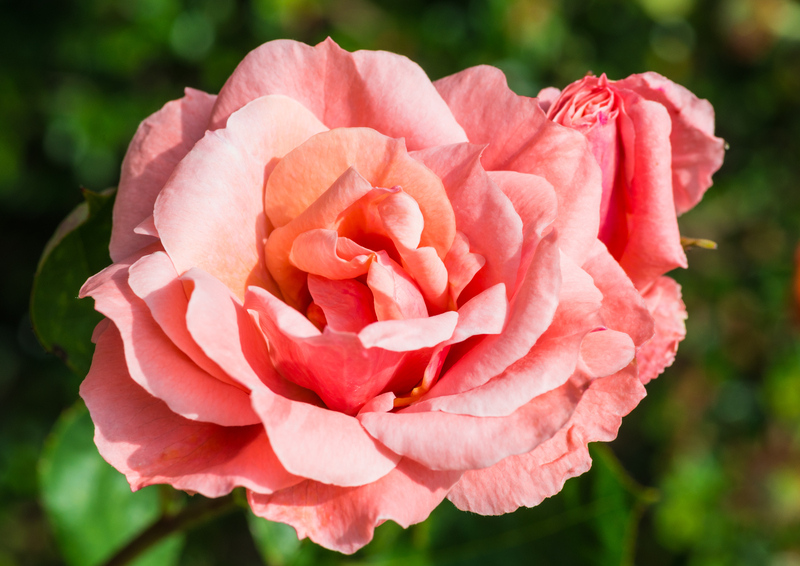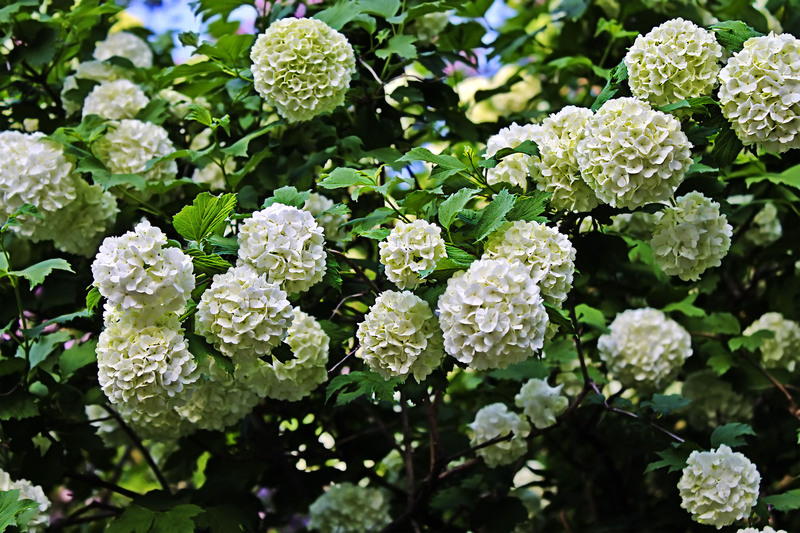Discover Tranquility in Your Yard with Zen Garden Designs
Posted on 15/08/2025
Discover Tranquility in Your Yard with Zen Garden Designs
Do you crave a peaceful retreat just steps from your home? Imagine stepping into your backyard and instantly feeling the stress melt away. With Zen garden designs, you can transform your yard into a haven of serenity, blending natural elements and minimalist beauty. This comprehensive guide will explore how you can discover tranquility in your yard, the history behind Zen gardens, their key features, and step-by-step tips for creating your own Zen-inspired oasis.
What is a Zen Garden?
Zen gardens, also known as Karesansui or Japanese rock gardens, originated in Japan and have been cherished for centuries as places of meditation and reflection. These carefully composed landscapes feature elements such as rocks, gravel, sand, and plants arranged to inspire peace, inspire mindfulness, and reflect the beauty of nature in a minimalist form.
- Minimalist layouts using only essential materials
- Symbolic arrangements representing natural landscapes
- Focus on tranquility and simplicity
- Spaces designed for contemplation and meditation
The History and Philosophy of Zen Garden Design
Zen garden designs are deeply tied to the philosophy of Zen Buddhism, which emphasizes simplicity, harmony, and mindfulness. The first Zen gardens appeared in Japan around the 14th century, created in temple courtyards for monks to meditate and seek enlightenment.
Each element in a Zen-inspired garden carries symbolic meaning. Rocks often symbolize mountains or islands, sand or gravel symbolizes water or emptiness, and carefully placed plants suggest resilience and beauty amid simplicity.

Benefits of Zen Garden Designs for Your Yard
Discovering tranquility in your yard through Zen garden landscaping doesn't only enhance your outdoor space's aesthetic appeal; it also offers a range of physical and psychological benefits:
- Reduces Stress: The calming visuals and serene ambience make it easier to relax and escape daily pressures.
- Promotes Mindfulness: Tending your Zen garden or simply gazing at its design encourages you to live in the present moment.
- Increases Property Value: A thoughtfully designed Zen garden can make your home more attractive to prospective buyers.
- Low Maintenance: Minimalist designs with rocks and gravel require less upkeep than traditional gardens.
- Encourages Wildlife: Selective plantings and water features can attract butterflies, birds, and beneficial insects.
Key Elements of a Zen Garden
Zen garden designs hinge on a few classic elements, each chosen for its symbolism and serene appearance. Blending these features in your backyard creates a calming environment that invokes Japanese tradition.
Rocks and Stones
- Represent mountains, islands, or animals.
- Arranged in groups or individually to suggest harmony or contrast.
Sand and Gravel
- Laid in wide open spaces to symbolize water, rivers, or the ocean.
- Raked into flowing patterns, inviting contemplation and meditation.
Plants and Moss
- Limited plant use, focusing on evergreens, moss, and bamboo for lasting greenery.
- Symbolizes endurance, resilience, and the passage of time.
Water Features
- Ponds, small fountains, or trickling streams evoke tranquility.
- Water elements bring movement and gently natural sound to the garden.
Bridges and Lanterns
- Stone bridges and lanterns provide visual focal points and enhance the spiritual atmosphere.
Design Principles for Tranquility
The art of Zen garden design is not only about what you add, but also what you leave out. Achieving tranquility in your yard means embracing minimalist design and the following guiding principles:
- Simplicity: Keep layouts uncluttered and materials to a minimum.
- Asymmetry: Create visual interest and suggest natural landscapes using uneven arrangements.
- Balance: Use negative space (ma) wisely, allowing each element to breathe and shine.
- Naturalness: Let features evoke nature's imperfections and unpredictability.
- Symbolism: Every stone, plant, and pattern should have thoughtful meaning, inviting meditation.
Step-by-Step Guide to Creating Your Own Zen Garden
Are you ready to discover tranquility in your yard with a Zen garden landscape? Whether you have a sprawling backyard or a modest patio, you can incorporate Zen elements on any scale.
- Choose Your Space: Select a quiet corner of your yard that gets partial sunlight and isn't heavily trafficked. Even a small plot or container can become a tranquil retreat.
- Plan Your Layout: Sketch your ideas. Decide where rocks, gravel, and any optional features (plants, water) will go. Remember: less is more.
- Prepare the Ground: Remove grass and weeds. Level the area or create gentle slopes. Lay down weed barrier fabric to prevent unwanted growth.
- Add Sand or Gravel: Create the 'sea' by spreading a few inches of white gravel or pale sand across the designated area.
- Position Stones and Rocks: Arrange stones with intention. Odd numbers grouped together create aesthetic balance. Bury stones partially to enhance their natural appearance.
- Plant Selective Greenery: Add tufts of moss, a small bamboo cluster, or evergreen shrubs. Avoid excessive color and keep plantings sparse.
- Add Water or Features (Optional): Incorporate a stone lantern, a trickling water basin, or a small arched bridge.
- Rake Patterns: Use a rake to draw lines or swirl patterns in the gravel or sand. This meditative act not only enhances visual appeal but encourages mindfulness.
- Install Seating: Place a nearby bench or flat stone where you can sit quietly and enjoy the garden's peace.
Tips for Maintaining Your Zen Garden Oasis
- Regularly rake sand or gravel to refresh patterns and remove debris.
- Trim plants sparingly to retain their natural forms.
- Clean water features and replace water as needed to keep them clear.
- Remove weeds promptly to maintain the minimalist look.
- Rotate rocks or add small details seasonally for renewed interest.
Zen Garden Design Ideas for Different Spaces
Not all yards are created equal--luckily, Zen-inspired garden designs are highly adaptable. Here are some creative ideas to inspire you:
CourtYard Zen Retreat
- Perfect for homes with enclosed patios or limited outdoor space.
- Create a meditative "room" with bamboo fencing, pebbles, and a single sculptural stone.
- Use potted evergreens and moss to soften hard surfaces.
Backyard Zen Oasis
- Design large sweeping gravel "seas" with clusters of standing stones.
- Add a pond or a winding dry stream bed for fluid movement.
- Install stepping stones to invite slow, mindful walking.
Container Zen Garden
- Use large bowls or trays filled with sand, gravel, and small pebbles for patios or balconies.
- Place a miniature lantern and a few carefully chosen stones for maximum effect.
- Great for meditative desks or indoor windowsills.
Water Feature Zen Garden
- Incorporate a stone basin (tsukubai) with bamboo spout or a subtle bubbling fountain.
- Surround with river rocks, moss, and ferns for extra tranquility.
- The gentle sound of water enhances the meditative atmosphere.
Best Plants for Zen Gardens
Minimalism is key when it comes to planting in Zen gardens. Choose plants that are easy to maintain and lend an evergreen presence. Here are a few favorites:
- Moss: Symbolizes age, tradition, and serenity.
- Bamboo: Represents strength and flexibility--and provides soothing sound when rustled by the wind.
- Japanese Maple: Adds seasonal beauty with red and gold foliage.
- Evergreen Shrubs: Boxwood, pine, and juniper maintain year-round texture and color.
- Fern and Groundcovers: Delicate textures that thrive in shaded Zen corners.
Zen Garden Accessories to Enhance Tranquility
Simple accessories can enrich your Zen-inspired landscape and spark deeper feelings of calm:
- Stone Lanterns: Classic aesthetic and nighttime glow.
- Bonsai Trees: Living works of art symbolizing harmony and patience.
- Water Basins: Essential to traditional tea gardens for ritual cleansing.
- Wind Chimes: Gentle melodies that invite mindfulness.
- Stepping Stones: Guide visitors through the garden in slow, intentional steps.
Zen Garden Design: Common Mistakes to Avoid
- Overcrowding: Too many objects can overwhelm rather than soothe.
- Ignoring Symbolism: Every addition should have a purpose or meaning in the space.
- Using Bright Colors: Stick to muted natural tones for true Zen tranquility.
- Neglecting Maintenance: Regular raking, pruning, and cleaning are essential to keep the garden tidy.
- Forgetting Balance: Both hardscape and softscape elements should be balanced and harmonious.

Incorporate Zen Garden Tranquility into Your Outdoor Living
The beauty of Zen garden design is that it integrates seamlessly with various outdoor styles. Use it as a focal point in your backyard, a minimalist accent beside your patio, or as a meditative pause along a garden path. You can even blend Japanese Zen garden design principles with modern landscaping for a unique take on tranquility.
"To understand Zen garden design is to embrace the art of seeing the extraordinary in the ordinary, and to invite serenity into your everyday life."
Whether you seek a personal sanctuary for meditation, a low-maintenance landscape, or a distinctive visual statement, Zen-inspired gardens have much to offer. By prioritizing simplicity, meaningful placement, and harmony with nature, you'll create an outdoor space that's more than just beautiful--it's a source of daily peace and rejuvenation.
Conclusion: Your Path to Zen Garden Serenity Begins Today
Why wait to discover tranquility in your yard? Let Zen garden designs inspire you to reclaim your outdoor space as a place of relaxation and mindfulness. Even the smallest pocket of land or balcony can become a serene retreat with thoughtful planning and minimal materials.
Take your first raked step toward a more peaceful, centered, and beautiful home environment today--with the timeless art of Zen garden landscaping.
For more tips, expert guides, and ideas on transforming your outdoor spaces, follow our blog and share your Zen garden creations with us!

